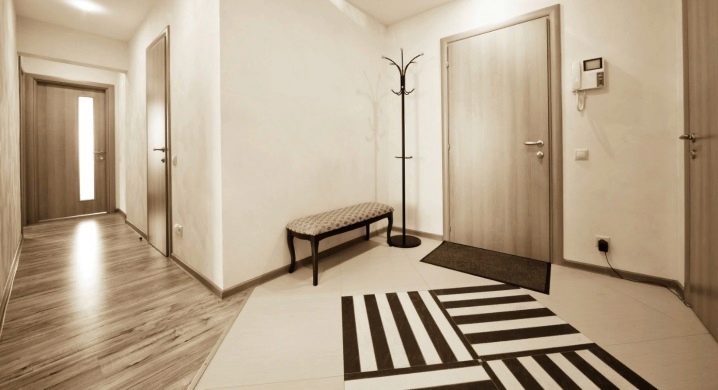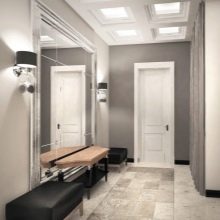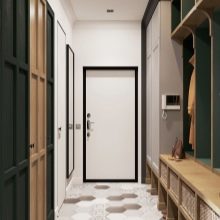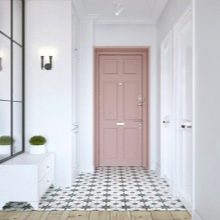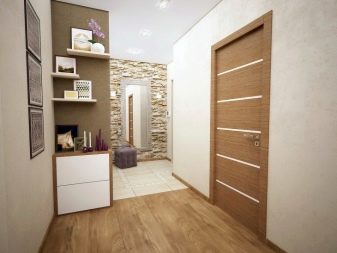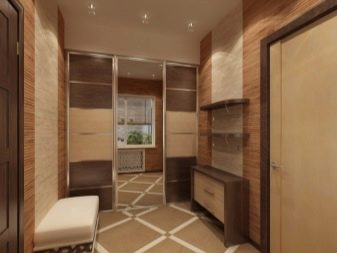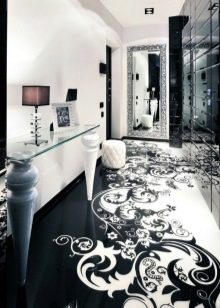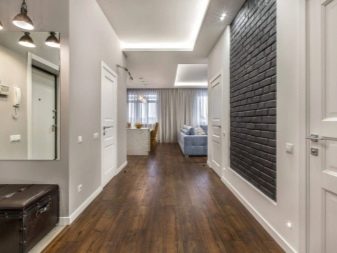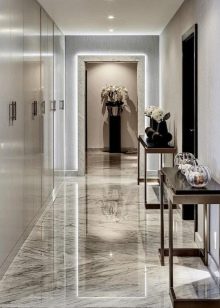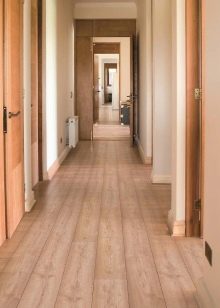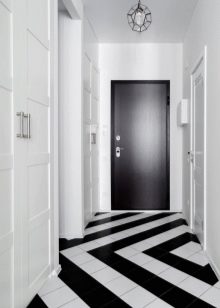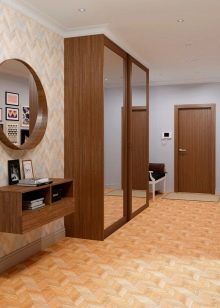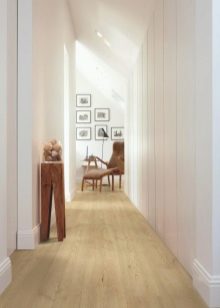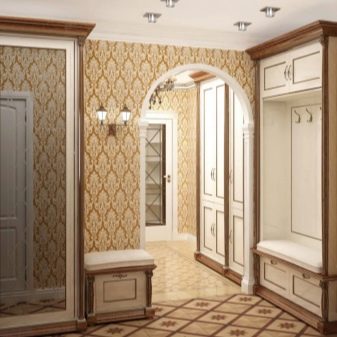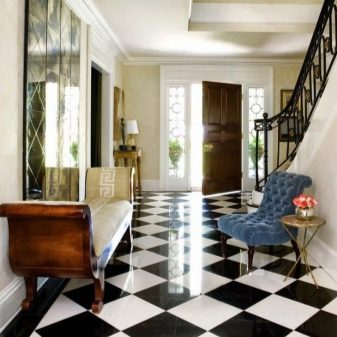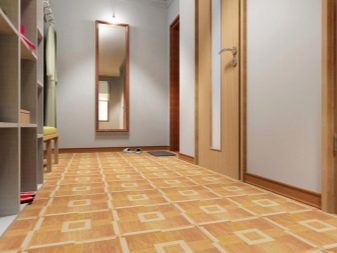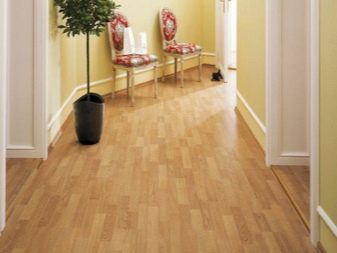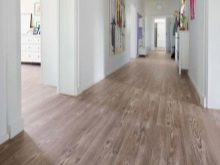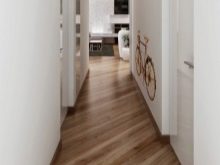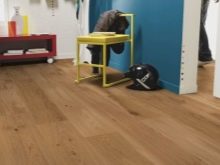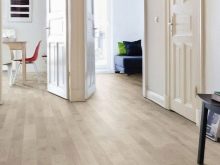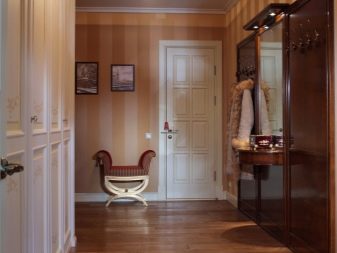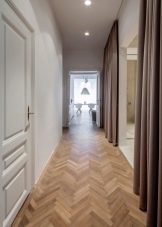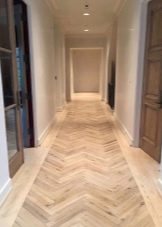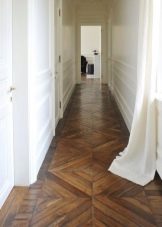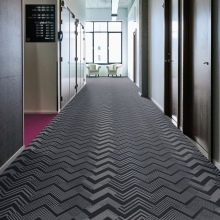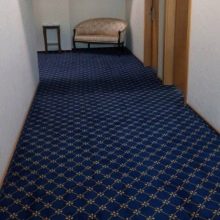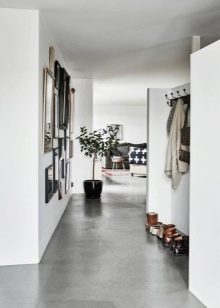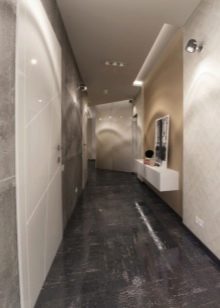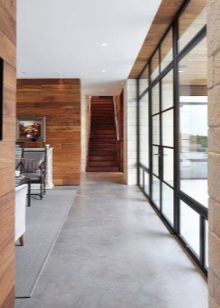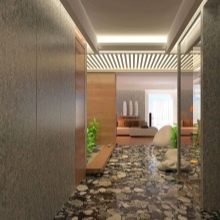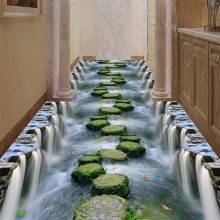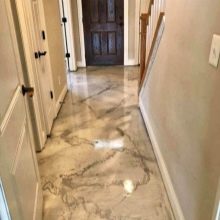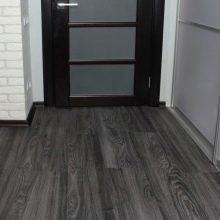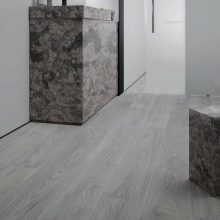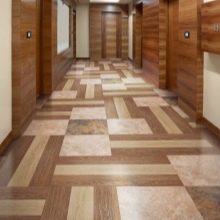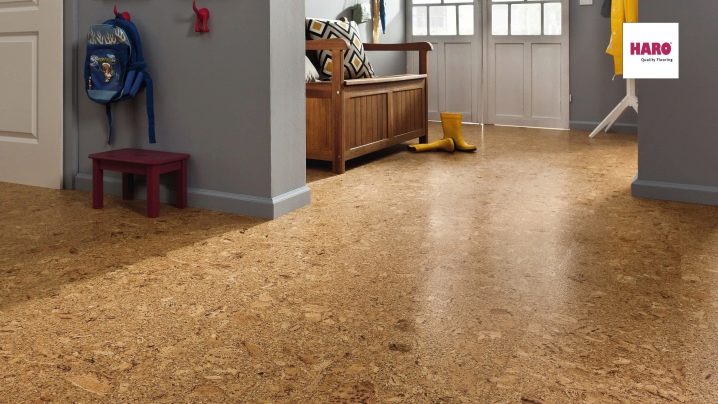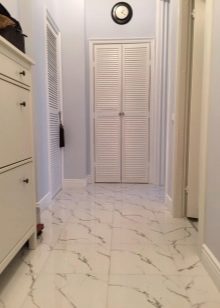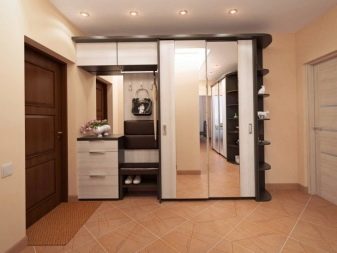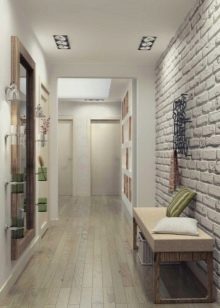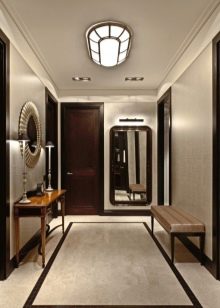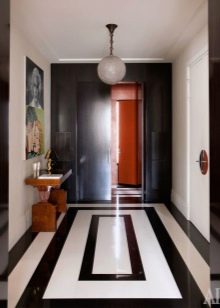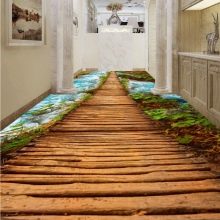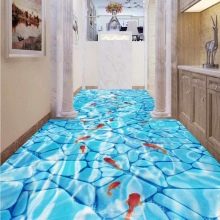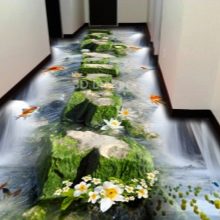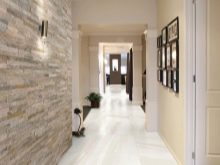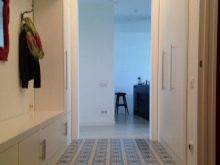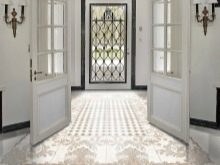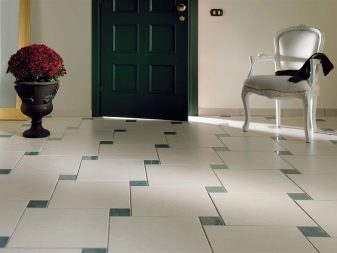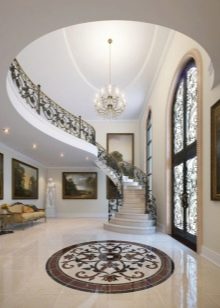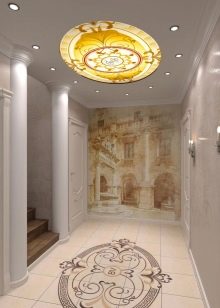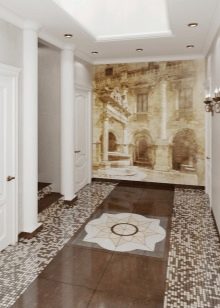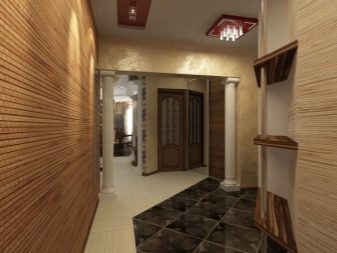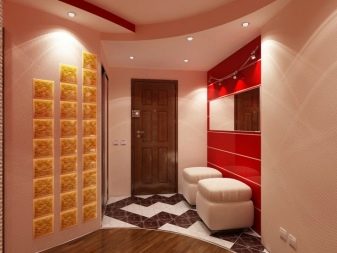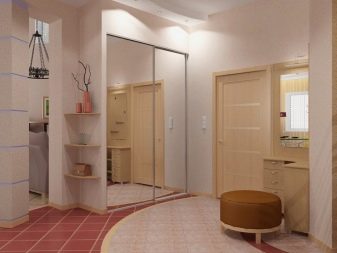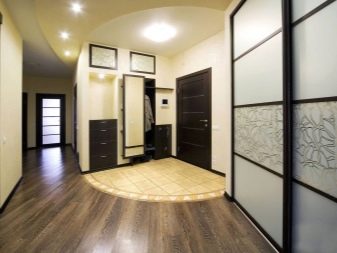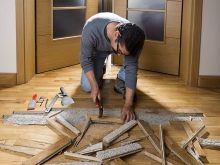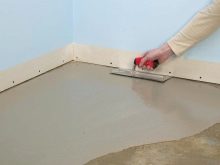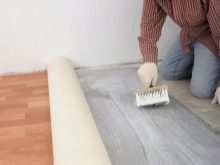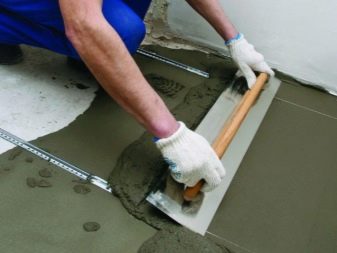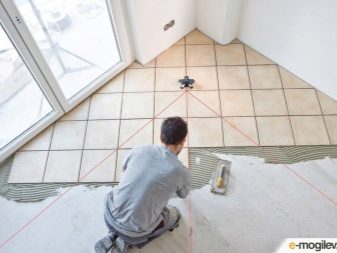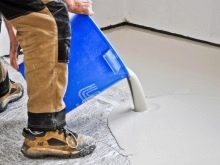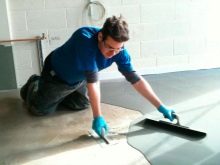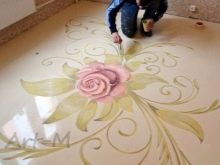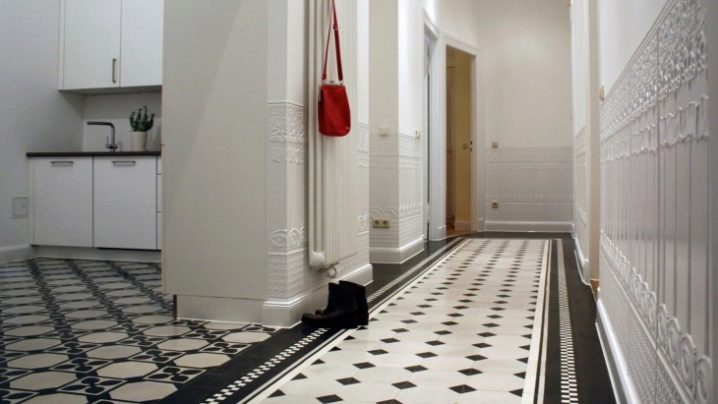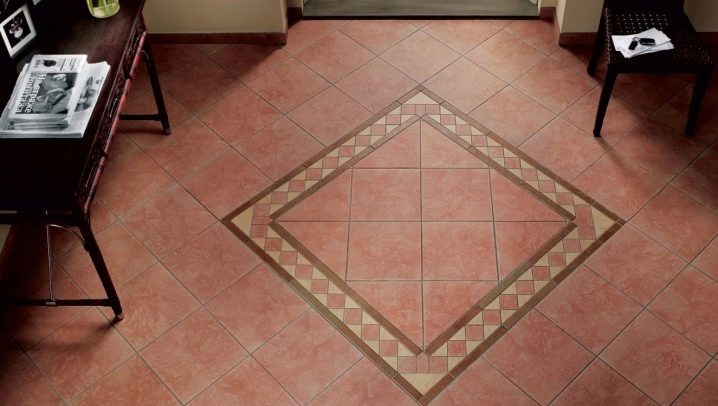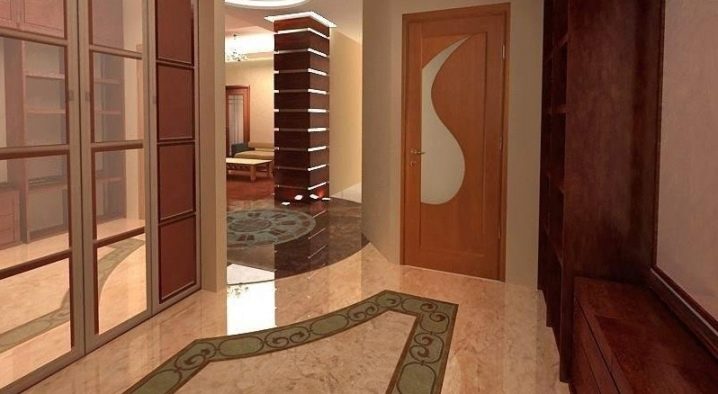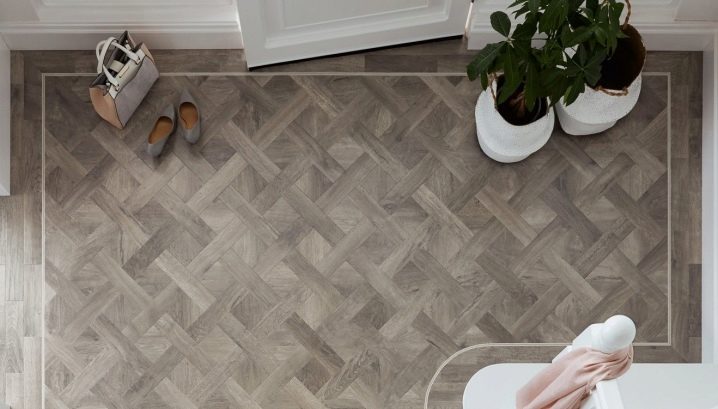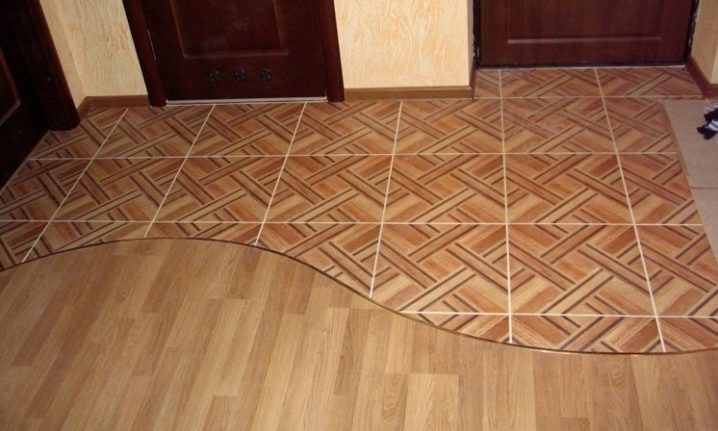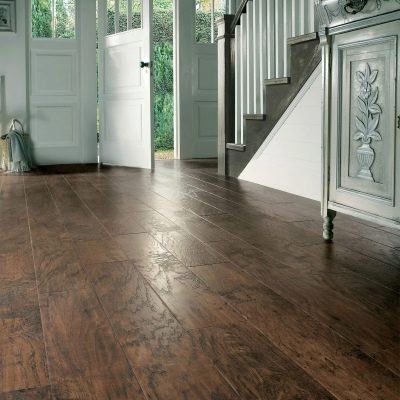Everything about floor decoration in the hallway
The floor covering of the entrance area of the dwelling should be practical and aesthetically pleasing. In this article, we will consider the main criteria for choosing materials for the floor of the corridor, their features, types, design and design methods.
Peculiarities
There are different types of floor coverings on the building materials market. They are distinguished by their decorative and technical properties. They have a different degree of functionality, color scheme, texture, surface type.
According to GOST and SNiP normative documents, floor materials meet a number of operational requirements. In particular, they have the required level of mechanical strength and environmental safety. Their main criteria are:
- wear resistance;
- environmental friendliness of the composition;
- soundproofing;
- fire safety;
- ease of care;
- decorativeness.
Appropriateness of use in a particular room is added to this list of requirements. Harmonious infusion into the stylistic design of the interior is also important. The corridor is considered a high traffic area. The floor covering for such a room should have the maximum level of moisture protection and chemical neutrality. It should not be destroyed by dirt, wet shoes or dust.
The composition of the hallway flooring should be free of volatile chemicals (in particular, formaldehyde). The material can be completely hypoallergenic. Some coatings are supplied with antibacterial additives. Others have antistatic, dielectric properties. Floor materials for decorating hallways must be resistant to temperature extremes.
They have a different level of moisture protection, impact resistance, anti-slip.
Materials (edit)
Various modern materials are used for cladding the floor of the corridor. Each of them has its own characteristics, is produced in a certain color range, has its own texture, thickness, density.
Tile
Tiled flooring is a versatile type of flooring. It has no analogues in terms of wear resistance, is not afraid of prolonged contact with water. Serves over 20 years, non-toxic. Easy to care for and wash (allows the use of aggressive detergents).
Along with the advantages, the tile gives a stably cold surface. He needs a "warm floor" system. It is considered difficult to install. May crack from falling heavy objects.
Ideal for finishing the floor in the corridor of an apartment or private house - non-slip tiles of 3 strength class. The colors are selected taking into account the background design of the hallway or the entire dwelling as a whole.
Linoleum
Standard material for corridor installation. Sold in rolls, it differs in a class of wear resistance. It can imitate any texture, it can be smooth and non-slip. Moisture-resistant, easy to clean, but prone to dents and creases.
It can be household, commercial and semi-commercial. Ideal options for corridor flooring are commerce and semi-commercial. They are resistant to abrasion, durable and reliable. Combine with different floor finishes.
Linoleum has a different width, density and thickness of the top layer. Can be provided with foam and soft backing. Variable in colors and designs.
Laminate
A budget analogue of parquet is made from chipboard, covered with a special film. It is optimally strong, wear-resistant, suitable for laying in premises with high traffic. It is considered easy to install, you can lay it with your own hands, without involving outside specialists.
Diversified in the choice of colors.Its surface can imitate any building material, including parquet, board, porcelain stoneware, marble, cork floor.
However, due to poor moisture protection, it can swell (regardless of the use of special impregnations).
Parquet
Parquet board, like block parquet, is considered a premium flooring material. Its top layer is made of expensive wood species. The lower layers are from the budget. The parquet floor looks beautiful and high-status.
Parquet flooring is environmentally friendly and safe for human health. It can be laid using a wide variety of styling patterns. Parquet is easy to repair: if necessary, it is enough to replace only damaged elements.
However, parquet does not like frequent cleaning, let alone washing. It needs a protective covering. Such a floor will constantly react to changes in humidity and temperature in the room. It is vulnerable to scratches and abrasions.
Carpet
More recently, carpet has been in special consumer demand. However, its use in the corridor is far from practical. It is beautiful, insulates the floor, gives the room an atmosphere of comfort.
But the material has more disadvantages than advantages. It does not have moisture protection, such a cladding is difficult to maintain. It cannot be washed: cleaning with a brush or vacuum cleaner is allowed. As a rule, these coatings are allergenic, dust accumulates in them, and moths start.
Concrete
The concrete floor is highly durable and durable. Such cladding is practical, environmentally friendly, resistant to deformation and destruction during operation. This coating is easy to maintain, the material itself can be tinted. Thanks to this, it can be painted in any color scheme of the interior.
Despite the many advantages, the concrete floor is colder than other coatings. It is dusty, has no sound insulation, and absorbs moisture. In addition, it is difficult to dismantle, it has a too hard surface. If it falls on it, damage to objects is possible.
Self-leveling floor
Self-leveling floor technology involves the use of special self-leveling polymer mixtures. This coating is considered one of the best and most practical. It is hygienic, easy to care for, and has the highest possible level of moisture protection.
The self-leveling floor is durable, it is suitable for finishing any walk-through rooms. Variable in color and design solutions, repairable. Differs in high wear resistance and impact resistance.
With all its advantages, the material is demanding in the preparation of the base. When installing it, you have to deal with the installation of a water heated floor.
Both the material and the work of specialists will be expensive.
Vinyl floor
Quartz vinyl tiles in appearance resemble laminate flooring. However, it is considered better than him, since it is not afraid of moisture, has strength and high resistance to mechanical stress. Practically inert to temperature extremes.
Has a wide range of textures, imitates wood, concrete, stone. The material gives the interior of the hallway a special atmosphere, it is considered affordable in comparison with cladding from other raw materials. Along with this, it is very demanding in the preparation of the foundation. Not suitable for installing "warm floors".
Suberic
Cork is a salvation for allergy sufferers. Such a floor is pleasant to the touch and is sold in the form of tile raw materials and interlocking panels. Outwardly it resembles linoleum. It looks beautiful and unusual.
Marble
The marble floor is used in spacious corridors (mainly in luxury mansions). The material is quite heavy and cold, but it has a unique texture, decorative and technical characteristics. The marble floor is hard and durable. It is resistant to water, scratches, and environmentally friendly.
Such a coating does not fade during operation and retains its aesthetic qualities. However, it suffers from contact with acidic agents. Can be damaged from falling heavy objects.It is considered expensive and difficult to install.
When choosing a material, they rely on the characteristics of the room. For example, if there is high humidity in the house, you should not buy laminate flooring. Its seamy side will absorb moisture and deteriorate.
You can not buy in such a room and carpet. Under these conditions, mold and moths will quickly appear under it. Here it is worth making a choice in favor of tiles.
It is better to buy linoleum in a typical apartment. It is easy to work with; if necessary, it can be quickly dismantled and replaced. If floor repair is not planned in the next 10-20 years, it is worth purchasing tiles or making a self-leveling floor.
Design
When choosing a floor design in the corridor, the characteristics of a particular room are taken into account. The floor covering can visually change the size of the room, as well as the nature of the interior. For example, the floor can be light, which visually increases the area of the room. Actual colors - beige, light gray, coffee, shade of light wenge oak.
These colors of coatings are good for decorating the floor of small hallways and corridors.
Floor coverings in dark colors look no less noble on the floor in the corridor. Ideal tones are brown, chocolate, graphite, taupe.
The contrast of white and black looks stylish and bright on the floor. Despite the fact that the stamps are black and white, such decoration can often be seen in the projects of interior designers.
An effective floor design can be created by installing a covering with a light background and dark ornaments. This design brings a special mood to the interior, emphasizes belonging to a certain style.
The design of the finish often depends on the capabilities of the material used. For example, a self-leveling floor can be not only monochromatic, but also three-dimensional. Thanks to this, canvases with a 3D effect can be created on the floor in the corridor.
The subjects of the paintings can be very diverse. Usually it is selected in harmony with the style of the interior. For example, it can be a marine motif, a tropical plot, an urban sketch. If desired, the floor can be given the texture of marble, stone, water, cork.
Tile is not at all a commonplace type of flooring. Its laying patterns can be standard, diagonal, regular and with inserts of small elements. It can be perfectly combined with other types of floor cladding.
Looks beautiful without a picture and with a print. It can be laid out in the form of a carpet covering the entire floor or its center. This design is suitable for decorating a corridor in English, classical, oriental styles.
The main thing is to choose the right theme for the picture. On sale there are materials with geometric, ethnic prints, monogram patterns. In addition, to create patterns, you can combine monochrome contrasting tiles.
If you wish, you can decorate the entrance to the dwelling with a fancy mosaic, using porcelain stoneware or glass tiles. There is a chance to make the floor in the corridor unique with the help of a tiled panel. Expressive accents-panels can be laid out from other materials. (for example, marble, parquet, self-leveling floor). Their shape is often traditional rectangular.
But often there are options round, semicircular, oval, diamond-shaped.
In the finishing of the floor, it is permissible to use 2 materials of different texture and color. The combined floor looks impressive and modern. It can be a coating with a transition from one color to another.
The cladding can be like a carpet runner. In this case, it is decorated with side piping. Simple ornaments are often formed in the center of the floor.
The original type of finishing is a two-level floor. The use of two different materials allows you to zone the space. For example, you can separate the dressing area, the entrance to the apartment. Design options can be very diverse.
How to do it?
Each type of flooring material has its own finishing characteristics.For example, carpet does not need additional preparation. It is measured out, cut off and laid on the base without much alignment. The joints between the floor and the wall are covered with a floor plinth.
If you need to lay linoleum, parquet or laminate flooring, preparation of the base is required. The list of works includes dismantling, elimination of cracks, bumps, pits, leveling. This is especially important when purchasing a slimline version. Otherwise, all defects in the base will be visible. Linoleum is glued to the base.
The parquet board and laminate are laid on the bedding. Depending on the shape of the elements, the material is laid out according to the pattern. Excess material is cut off. A plinth is mounted along the perimeter of the floor. In order for the parquet to last as long as possible, after laying it must be covered with a protective varnish.
The repair of the floor in the corridor with height differences is more thorough. When you need to pour a self-leveling floor or lay tiles on the base, first level the base with a level. If the tiles are placed on an uneven base, they will vary in height and will chip off over time.
Self-leveling floor technology involves the gradual application of the composition to the prepared base. The mixture is spread over the surface and leveled with special tools. The finishing coat is given the desired effect.
If a design option is created with a specific pattern, it is performed before the final pouring of the transparent material.
Beautiful examples
We offer several examples of a successful floor design in the interior of a home.
- Floor cladding option in neutral tones. The choice of design with the reception of zoning space.
- An example of a hallway decoration using tiles for the entrance area.
- Combined design option in the apartment, the use of different finishing materials.
- Hallway flooring with tiles, creating an expressive accent.
- An example of a corridor floor decoration with a non-standard room perspective.
- Choice of material with contrasting print for finishing the floor of a small hallway.
- Floor decoration with tiles with mosaic inserts, choice of light-colored coating.
- Combined flooring in the corridor, harmonious combination of tiles and linoleum.
- Floor design option with a smooth color transition from dark to light.
- Choosing a coating for the board for decorating the floor of the hallway of a country house.
